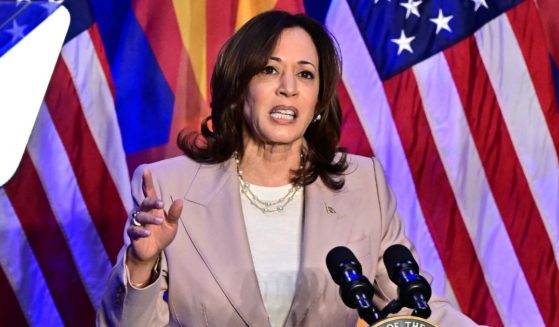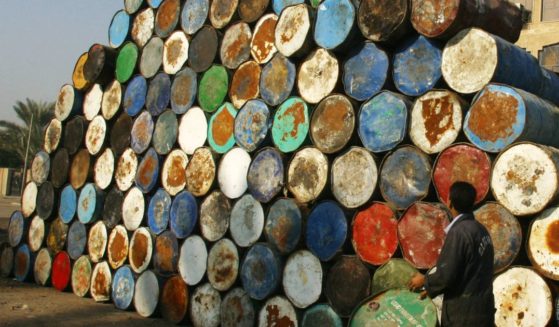Satellite images show oil tankers allegedly sabotaged
DUBAI, United Arab Emirates (AP) — An oil pipeline that runs across Saudi Arabia was hit Tuesday by drones, the Saudi energy minister said, as regional tensions flared just days after what the kingdom called an attack on two of its oil tankers near the Persian Gulf.
While both U.S. President Donald Trump and Iran’s Supreme Leader Ayatollah Ali Khamenei said they were not planning for conflict, the volatility was felt in oil markets with benchmark Brent crude trading over $71 a barrel, up more than $1 on the day.
The pipeline that runs from the kingdom’s oil-rich Eastern Province to a Red Sea port was shut down, but Saudi Energy Minister Khalid al-Falih Al-Falih vowed that the production and export of Saudi oil would not be interrupted.
The Houthis, who are at war with Saudi Arabia, said earlier Tuesday they launched seven drones targeting vital Saudi installations, without elaborating. They later claimed responsibility for the pipeline attack in comments broadcast by Houthi military spokesman Brig. Gen. Yahya Sari.
In a statement carried by the state-run Saudi Press Agency, al-Falih called the pipeline attack “cowardly,” saying recent acts of sabotage against the kingdom were targeting not only Saudi Arabia but also the safety of the world’s energy supply and global economy.
The attacks demonstrated the increased risks in a region vital to global energy supplies amid heightened tensions following the Trump administration’s withdrawal from the 2015 nuclear deal between Iran and world powers, and the subsequent re-imposition of U.S. sanctions to cripple the Iranian economy. Iran has since said it would begin enriching uranium at higher levels by July 7 if world powers failed to negotiate new terms for the deal.
The Saudis did not immediately assign blame for the drone assaults, which targeted two oil pumping stations west of the capital supplying the pipeline that runs from the east of Saudi Arabia to the Yanbu Port on its western coast.
Still, al-Falih in his statement named Yemeni rebel Houthis as a group that must be internationally confronted and accused them of being backed by Iran, Saudi Arabia’s regional rival.
Saudi Arabia has been at war with the Houthis and their allies in Yemen since March 2015, targeting the Iranian-allied rebels with near daily airstrikes.
“This is a message to Saudi Arabia: Stop your aggression,” Houthi spokesman Mohammed Abdel-Salam told The Associated Press. “Our goal is to respond to the crimes they are committing everyday against the Yemeni people.”
Saudi Aramco, the government-controlled oil company, said that as a precaution, it temporarily shut down the East-West Pipeline and contained a fire, which caused minor damage to one pumping station. It added that Saudi Aramco’s oil and gas supplies were not affected.
Saudi Arabia said the two petroleum pumping stations that were struck by drones are located in the greater region of Riyadh, home to the landlocked capital. The stations, targeted around the same time early Tuesday, are located in al-Duadmi and Afif, about 200 kilometers (125 miles) west and 400 kilometers (250 miles) west of Riyadh city, respectively.
Saudi Arabia built its pipeline in the 1980s amid fears that the Iran-Iraq war would cut off shipping through the Strait of Hormuz. The 1,200-kilometer (746-mile) pipeline is actually two pipes that have a total capacity of 4.8 million barrels of crude oil a day, according to the U.S. Energy Information Administration.
The two oil pumping stations are over 800 kilometers (500 miles) from Yemen’s northern border with the kingdom.
The drone strikes reflect how the Houthis have tried to expand their capabilities during the four-year war. The rebels have targeted Riyadh with missiles and used drones to disrupt air traffic at Saudi airports near the Yemen border. Iran has been accused by the U.S. and the U.N. of supplying ballistic missile technology and arms to the Houthis, which Tehran denies.
In Washington, Trump told reporters he would “absolutely” be willing to send troops to the Middle East, but that he’s not planned for that and hopefully won’t have to plan for that.
While Trump dismissed a report in The New York Times that the White House is reviewing military plans against Iran that could result in sending 120,000 U.S. troops to the Middle East if Iran attacks American forces or steps up work on nuclear weapons, he said if the U.S. was going to get into a military conflict with Iran, “we’d send a hell of a lot more” troops.
Khamenei, Iran’s supreme leader who has final say on all state matters, was quoted by state TV as telling senior officials that his country won’t negotiate with the United States, calling such talks “poison.” But he also said, “Neither we, nor them is seeking war. They know that it is not to their benefit.”
At a Tuesday evening gathering, he reportedly added: “This is not a military confrontation, because no war is going to happen.”
Washington recently deployed an aircraft carrier, the USS Abraham Lincoln, and B-52 bombers to the Persian Gulf to counter alleged, still-unspecified threats from Tehran. The U.S. has recently warned ships that “Iran or its proxies” could be targeting maritime traffic in the region.
Meanwhile, the details around alleged acts of sabotage to four oil tankers, including two belonging to Saudi Arabia, off the coast of the UAE’s port of Fujairah remain unclear. Satellite images obtained Tuesday by the AP showed no visible damage to the vessels, and Gulf officials have refused to say who they suspected was responsible.
The MT Andrea Victory, one of the alleged targets, sustained a hole in its hull just above its waterline from “an unknown object,” its owner Thome Ship Management said in a statement. Images of the Norwegian ship, which the company said was “not in any danger of sinking,” showed damage similar to what the firm described.
Satellite images provided to the AP by Colorado-based Maxar Technologies showed a boom surrounding the Emirati oil tanker A. Michel, indicating the possibility of an oil leak. The other three showed no visible damage from above.
A U.S. official in Washington, without offering any evidence, told AP that a U.S. military team’s initial assessment indicated Iran or Iranian allies used explosives to blow holes in the ships. The official was not authorized to discuss the investigation and thus spoke on condition of anonymity.
Speaking in New Delhi, Iranian Foreign Minister Mohammad Javad said he spoke with Indian officials about concerns of “suspicious activities and sabotage in the region.”
“We announced that we had previously predicted these sorts of activities aimed at escalating tension in the region,” he said.
Also Tuesday, Spain temporarily pulled one of its frigates that was part of a U.S.-led fleet from near the Persian Gulf because of the mounting tensions. The Ministry of Defense said the Méndez Núñez, with 215 sailors aboard, will not cross the Strait of Hormuz into the Gulf with the USS Abraham Lincoln. The Spanish frigate was the only non-U.S. vessel in the fleet.
___
Associated Press writers Maggie Michael and Samy Magdy in Cairo and Amir Vahdat in Tehran, Iran, contributed.
The Western Journal has not reviewed this Associated Press story prior to publication. Therefore, it may contain editorial bias or may in some other way not meet our normal editorial standards. It is provided to our readers as a service from The Western Journal.
Truth and Accuracy
We are committed to truth and accuracy in all of our journalism. Read our editorial standards.












